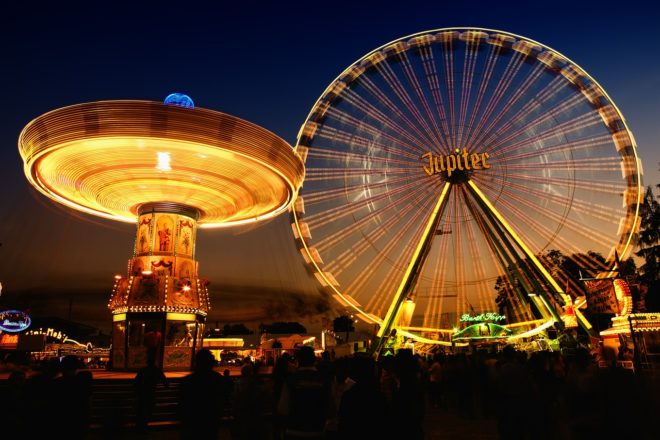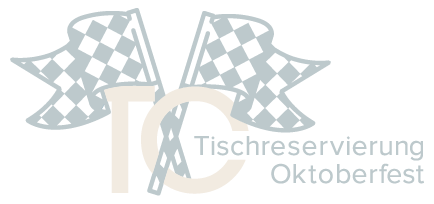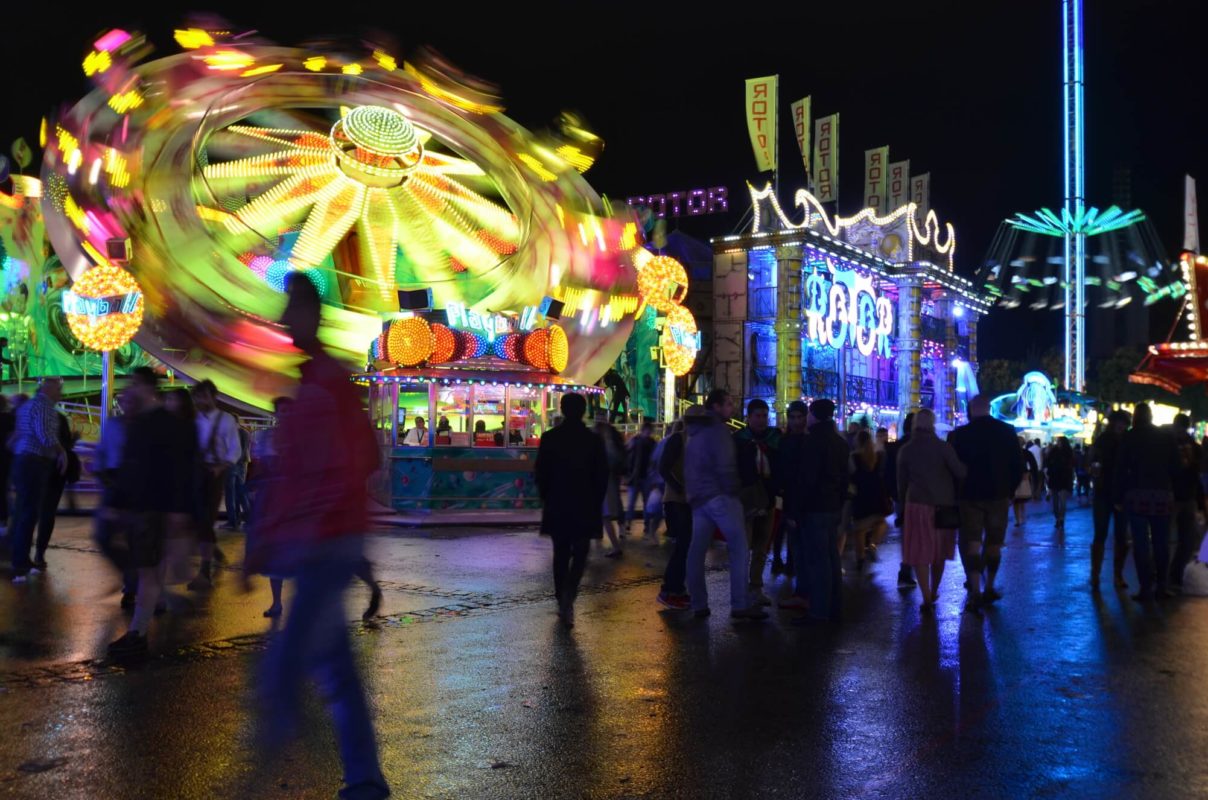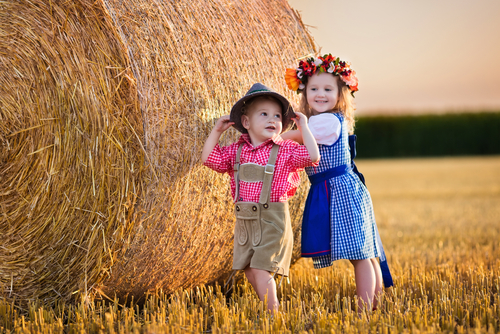Uncategorized
Why is the Oktoberfest celebrated in September?
How it all started – why it draws the world for the 187th time to the Oktoberfest. For over 100 years Oktoberfest has been in September, why the weather and hay making have an important role. Find out how it started!
The Oktoberfest in Munich starts with the arrival of the famous/notorious Wiesn innkeepers, their followers and their distinguished guests at the opening on the Theresienwiese in Munich. An hour later, at the sounding of the noon church bells, the Wiesn opens. The first “beer tap” is traditionally at the Schottenhammel festival tent. Those who’ve decided to participate in the Oktoberfest long before its start are advised to book a table as soon as possible, directly at the tent administration or via the Internet. The second is a time-saving and reliable option to guarantee a communal and unforgettable Oktoberfest visit with colleagues, business partners or even customers, especially for last-minute business people.
Through its exclusive variety of tents the Munich Wiesn offers you an opportunity to have your own individual Wiesn highlight, and not only at the traditional events like the Oktoberfest Outfits or the riflemen on the first Sunday. Whether you are tasting the Bavarian gourmet cuisine, meeting prominent visitors or making new contacts over a cold beer, the Oktoberfest offers you an ideal opportunity to do so every year.
In September 2023 the Oktoberfest with its extensive festival programme will be a showground where old and young sit together peacefully at the tables and spend their time celebrating, laughing, dancing, swaying to music and merrily splashing around in life. This heartfelt and exuberant joy of life is another reason why so many people, even outside of the city walls and Bavaria’s national boundaries, love and appreciate this festival

How it all started – why it takes the world for the 188th time on the Oktoberfest?
How it all started– why does the whole world go to the Oktoberfest for the 187th time?
In the beginning there burnt the fire of love. The latter King Ludwig I of Bavaria married his Princess Therese of Saxony-Hildburghausen on 12 October 1810. The whole of Munich was energised by those five festive days – the young manor house put on splendid productions that they moved the hearts of the aristocracy and citizens of the city alike. The royal family was close to the people, and the wedding ceremonies were crowned with drums and trumpets, parades and processions, as well as horse-racing. Already a year later the success was firmly established and celebrated, so that until today this feast is celebrated on the „Theresienwiese“, named in honour of the bride – it is „the Oktoberfest Place“. The popular horse-races would be repeated exactly one year after the wedding and the great and glorious tradition of the „Oktoberfest“ began. For more than a 100 years Oktoberfest has started in September and ended early in October. The area surrounding the festive meadow („Wiese“) used to be farmland, and the farmers had to bring in their second hay harvest – true to the motto: first work, then play. Weatherwise, this scheduling was more appropriate.
 First harvesting, then fun!
First harvesting, then fun!
Quite simply: The weather is to blame
Why not Septemberfest?
Even more tradition on the „Oide Wiesn“
It is possible to visit the Oide Wiesn again. This historic area has been reconstructed to its full beauty and splendour on the Theresienwiese. Many visitors and families with children enjoy the peace and charm of this nostalgic site. The Oide Wiesn is separated from the rest of the Oktoberfest grounds. It is the “Festival within the Festival” – its own unique area within the much-loved Theresienwiese. It is distinguished from the rest of the terrain by an understanding of the archaic use of the word „Oid“ (meaning „old“, standard German „alt“). For this reason it houses only historical market stands and roundabout rides. What distinguishes it from the normal Oktoberfest is probably the fact that “modern stuff” does not exist here. The really traditional Oktoberfest takes place here, parallel to the folk festival on the Theresienwiese.
And the Oktoberfest of today?
The folk festival has changed and expanded over the course of time. The crowds of guests from all over the world have presented the organisers with enormous logistical challenges. There are around 200 fairground companies on Munich‘s Wiesn today, of which just under 80 are carousel rides. The historical and popular traditions are expanded with new rides every year to provide girls and boys with new thrills. Over the last few years the visitor count was between 5.5 and 6.9 million people. The Theresienwiese has a surface area of 42 hectares, of which the fairgrounds cover as much as 31 hectares. More than 14 festival tents can be visited at the Oktoberfest. Substantial festivities have been a tradition in the Crossbowman’s Tent since 1895. A fabulous and joyful atmosphere reigns for the entire time of the festival in the traditional Brauroesl festival hall. And if you take insiders‘ word for it, the best beer of the whole festival can be found in the Augustiner Festhalle. The second largest beer tent is the Hofbräu Festival Tent, and authentic fish-on-a-stick can be found at the Fischer-Vroni beer tent. The invited quests can feel like they’re in heaven in the Hacker festival tent, and with its 5,300 seats the charming Archer’s Tent [Schützenzelt] counts among the smaller localities. If you visit what was formerly known as the Nymphenburg wine and sparkling wine tent, you will be rewarded with a wonderful selection of wine, sparkling wine and champagne as well as culinary delights in Kufflers Wine Tent. The bands there are real entertainers and the demands on the kitchen are very high in this tent. The Winzerer Fähndl traditionally has a slightly older audience. The Marstal Festival Tent has been inviting people to enjoy beer and sing-alongs since 2014 and is thus relatively new. The Schottenhammel Festhalle, on the other hand, is the most traditional and oldest. The first barrel of Oktoberfest beer is therefore traditionally tapped in this tent by the mayor of the Bavarian state capital.
How to make your Oktoberfest visit a complete success
Since each Wiesn-Wirt [“inn-keeper” on the Wiesn] has a completely independent reservation strategy, planning your table selection in advance is important. In this way you can ensure that your Oktoberfest is a complete success and can be enjoyed in full “measures”. In contrast with direct contact with the tents, the possibility of online table reservation is a time-saving and sensible alternative way of obtaining a seat at your desired tent table. Whether your heart beats for traditional folk festivals or modern international folk festivals, with the right planning your next Oktoberfest visit is sure to be an unforgettable experience.
A tip especially for nostalgic people: take enough time to visit the somewhat set-apart Oide Wiesn.
[/col] [/row]



 Deutsch
Deutsch
 First harvesting, then fun!
First harvesting, then fun!